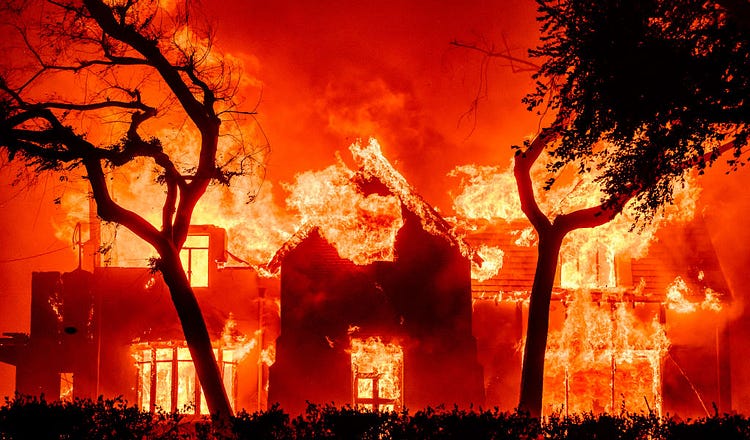
LOS ANGELES—Last night, our synagogue burned to the ground. I haven’t seen the wreckage. I can’t get there. The synagogue is—was—nestled near the base of the San Gabriel Mountains, the epicenter of the Eaton Canyon fire, one of the three fires pressing down on the city.
At the time—this was a little before 10 p.m.—the Palisades fire, 25 miles west of us, was the worst, the biggest, devouring the big, sun-dappled houses overlooking the Pacific, the red, Spanish-tile roofs and infinity pools and tennis courts.
We had been debating for a few hours whether to leave, and then things started to happen: The kids’ schools emailed us to say there would be no school tomorrow; a few people we knew evacuated; other people posted videos of the fire taken from their balconies or decks, peering out at the mountains and the tree line, the orange-red-black plumes pushing in. Finally, I wandered out into our little street, and it was smoky, and you could see the embers flickering through the dark, and I went inside and said, “Let’s go.”

